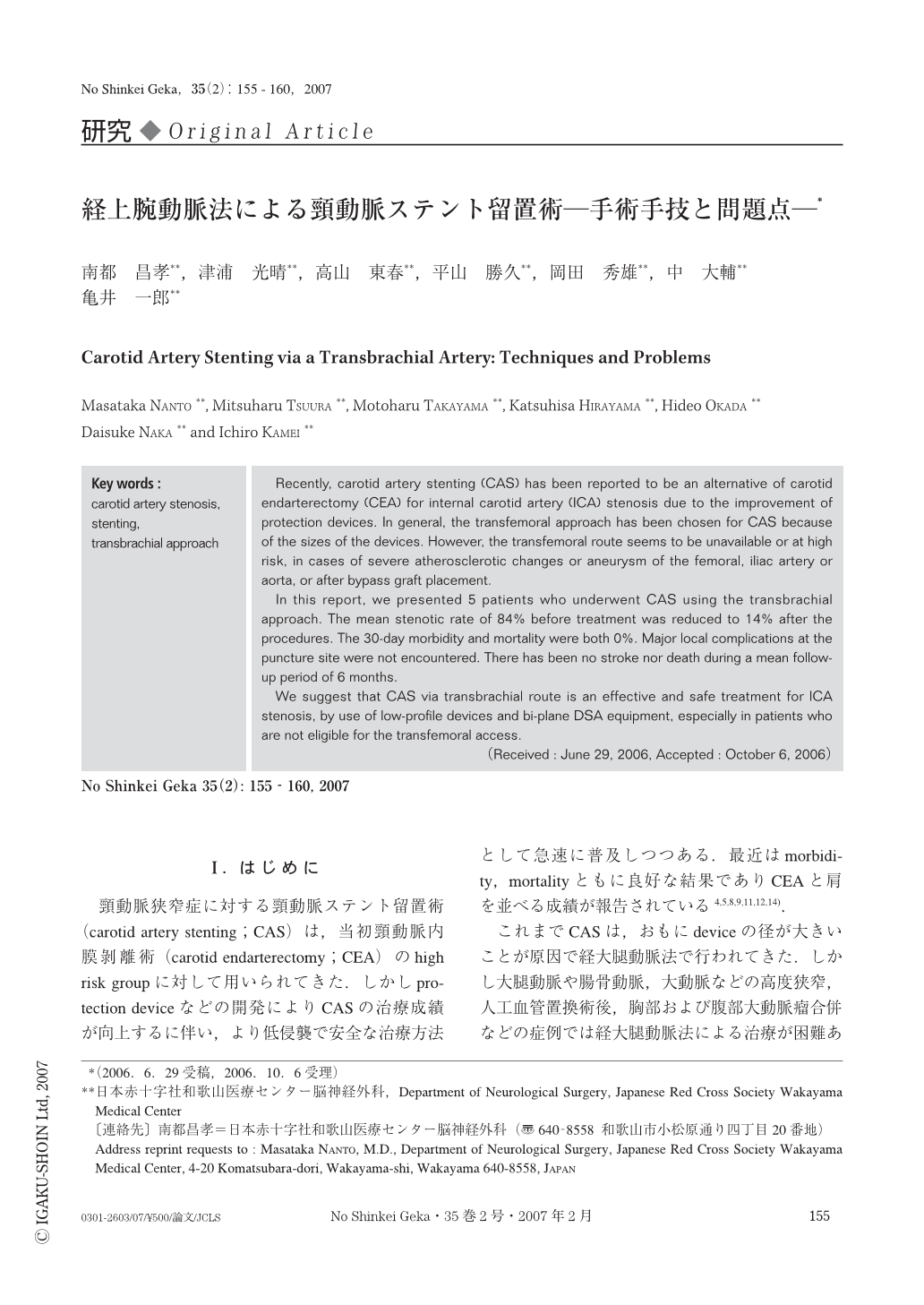Japanese
English
- 有料閲覧
- Abstract 文献概要
- 1ページ目 Look Inside
- 参考文献 Reference
Ⅰ.はじめに
頸動脈狭窄症に対する頸動脈ステント留置術(carotid artery stenting;CAS)は,当初頸動脈内膜剥離術(carotid endarterectomy;CEA)のhigh risk groupに対して用いられてきた.しかしprotection deviceなどの開発によりCASの治療成績が向上するに伴い,より低侵襲で安全な治療方法として急速に普及しつつある.最近はmorbidity,mortalityともに良好な結果でありCEAと肩を並べる成績が報告されている4,5,8,9,11,12,14).
これまでCASは,おもにdeviceの径が大きいことが原因で経大腿動脈法で行われてきた.しかし大腿動脈や腸骨動脈,大動脈などの高度狭窄,人工血管置換術後,胸部および腹部大動脈瘤合併などの症例では経大腿動脈法による治療が困難あるいはhigh riskな場合がある.親カテーテルやステントなどのdeviceの改良に伴いロープロファイル化が可能となった結果,これらの症例に対し経上腕動脈法による治療が可能となってきた.今回,われわれは5例の経上腕動脈法によるCASを経験したので,症例,手術手技について報告するとともにその問題点,および適応症例について検討した.
Recently, carotid artery stenting (CAS) has been reported to be an alternative of carotid endarterectomy (CEA) for internal carotid artery (ICA) stenosis due to the improvement of protection devices. In general, the transfemoral approach has been chosen for CAS because of the sizes of the devices. However, the transfemoral route seems to be unavailable or at high risk, in cases of severe atherosclerotic changes or aneurysm of the femoral, iliac artery or aorta, or after bypass graft placement.
In this report, we presented 5 patients who underwent CAS using the transbrachial approach. The mean stenotic rate of 84% before treatment was reduced to 14% after the procedures. The 30-day morbidity and mortality were both 0%. Major local complications at the puncture site were not encountered. There has been no stroke nor death during a mean follow-up period of 6 months.
We suggest that CAS via transbrachial route is an effective and safe treatment for ICA stenosis, by use of low-profile devices and bi-plane DSA equipment, especially in patients who are not eligible for the transfemoral access.

Copyright © 2007, Igaku-Shoin Ltd. All rights reserved.


